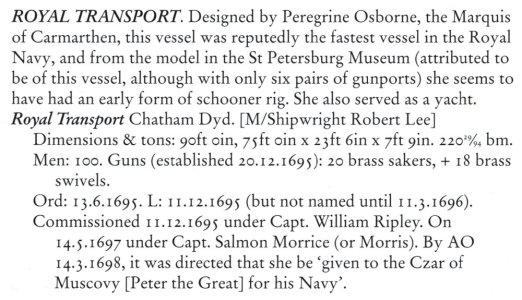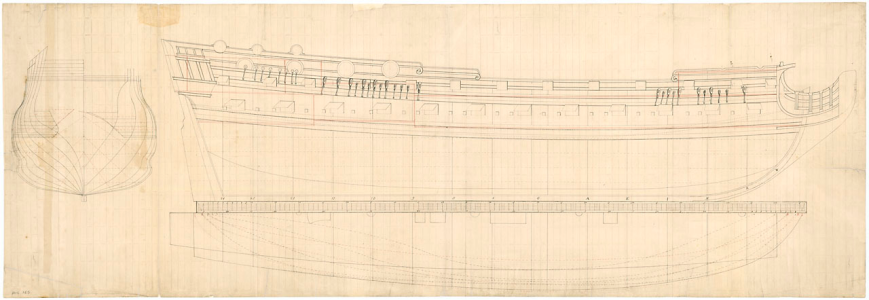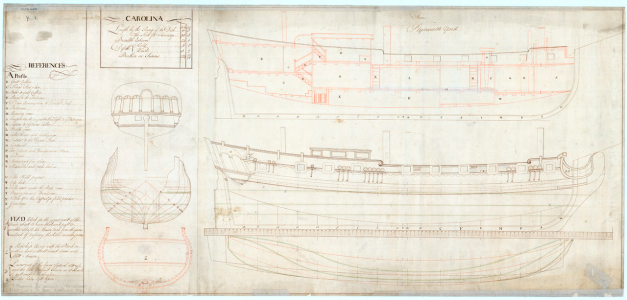.
Now it's even starting to seem funny .
 |
As a way to introduce our brass coins to the community, we will raffle off a free coin during the month of August. Follow link ABOVE for instructions for entering. |
 |
WALDAMERE THE BEST WAY TO HANDEL THIS IS TO IGNORE,K IGNORE AND TOTALLY IGNORE HE IS GETTING TO YOU WITCH IS HIS OBJECTIVE SO BASICALLY JUST NO RESP0ONCE WHAT SO EVER KEEP UP YOUR VALUABLE WORK SO WE CAN LEARN. GOD BLESS STAY SAFE YOU AND YOURS DON
The frigate "Shtandart" was built in Dutch feet [...]. The drawing is made in English feet.
According to this correspondence, the drawing shows the frigate "Transport", built in Voronezh as a military and simultaneously as a royal yacht.
Vybe Gerens, who built the "Shtandart", did not have this drawing.
Peter I looked at it and was dissatisfied that it was not like the English "Transport".
The English "Transport" had an intrum [depth in hold] of 9 feet 9 inches (see V. Ryan in Mariners Mirror).


On Peter's drawing there is no upper width and vertical 1 foot.
In general, Peter I, judging by his works, did not like the upper width.
Besides, the author of the article, Alexander Ivanov, claims in his article that Peter I learnt or witnessed the drawing of ship designs by Peregrine Osborne, adopting his habits and specifics. Incidentally, both known ship designs by Peregrine Osborne sport a double breadth line as well, as verified and pointed out by my friend Martes.



В жесткой связи (или исключении такой связи) представленного плана с фрегатом «Штандарт» 1703 года такое утверждение просто неуместно, на самом деле ничего не значит, и, кроме того, к сожалению, является симптомом вредной ортодоксальности в этой области, а не лучшим доказательством известные знания. методы проектирования и производства, применяемые как тогда, так и сегодня.
один из проектов Мэтью Бейкера конца XVI века и проекта голландского грузового судна XVII века. В обоих случаях эти разработки предназначались для строительства судов разных размеров, а именно путем их масштабирования вверх или вниз с использованием разной длины длины. В частности, обратите внимание на несколько линейных масштабов разной длины на обоих рисунках.
В затонувшей Васе 1628 года было найдено несколько плотницких мер длины футов, как 11-дюймовых, так и 12-дюймовых, и все с разной фактической длиной.
Согласно содержанию публикации Александра Иванова, размещенной выше, это всего лишь предположение, не обязательно верное.
Согласно содержанию переписки, недовольство правителя было вызвано прежде всего пропорциями реально построенного корабля, или, как правильнее понимать, его размерами.
Лично я интерпретирую это так, что Вибе Геренс, на судостроителе, использовал план корабля с предполагаемой четвертью 90 британских футов, но с номинальными соотношениями 1:1 (либо по своей инициативе, либо по инициативе администрации верфи), построил корабль с фактической длина 90 голландских футов, фактически уменьшив его в пропорциях 304,8 мм до 283 113 мм (или другой голландской мере, например, модифицированному рейнландскому футу 287 758 мм, также использовавшемуся в голландском судостроении в то время, как, возможно, следует из заданного набора размеры Olifant 1705 ; более подробно о голландских мерах см., например, Джон К. Маккарти, Морская археология и цифровые 3D-библиотеки – исследование голландских торговых судов (1595–1800), 2020 г.
В содержании источников, которые цитируются в статье Александра Иванова, нет ничего, что опровергало бы эту интерпретацию. Напротив, это прекрасное мышление меньших «пропорций» фрегата «Штандарт» 1703 года, что и стало причиной недовольства правителя.
Этот конкретный фрагмент данных на самом деле не имел большого значения в этом десятилетии, однако в статье Уильяма Райана, опубликованной в 1983 году, которую вы использовали и на которую ссылались, могла быть какая-то ошибка в этом отношении. Поскольку этот конкретный размер указан в более поздних списках флота, таких как 7 футов 9 дюймов, как Лайоном в 1993 году, так и Уинфилдом в 2009 году. Для удобства чтения я включил соответствующие записи из приведенных ниже работ:
Да, он там есть,
Совершенно не ясно, на чем основано такое утверждение, поскольку все или почти все русские крупные или морские военные корабли времен Петра I, заявленные по английскому методу и представлены как в коллекции чертежей Петра I из библиотеки Российской академии наук (БАН), так и на планах. Российское военно-морское архива (РГАВМФ) имело двойную линию борта. Хотя следует признать, что не всегда легко выводить линию из дуги окружения при определении обстоятельств, особенно на основе одного лишь визуального наблюдения.
Кроме того, автор статьи Александр Иванов в своей статье утверждает, что Петр I учился или был свидетелем рисования проектов кораблей Перегрина Осборна, пересматривая его привычки и особенности. Между прочим, оба известных проекта кораблей Перегрины Осборны также имеют двойной линейный стол, который является формой и формой моего друга Мартеса.
Когда аргументов нет, сохраняются одни эмоции. Ну, а по поводу Вашего хамства уже говорили, повторяться не буду.
Ремарка: мало быть хорошим инженером; надо еще уметь оставаться Человеком.
Успехов в оболванивании почитателей!
.
Really!? Do you have any more instructions on manipulation, rudeness and lack of humanity? This is really funny.
.
Both members, don't get personal. If the discussion doesn't stay within the bounds of decency and the rules of our forum, I'll be forced to close this topic. Please be mutually polite, and save your emotions for concerts and sports events.Ну, живот не надорвите от смеха.
